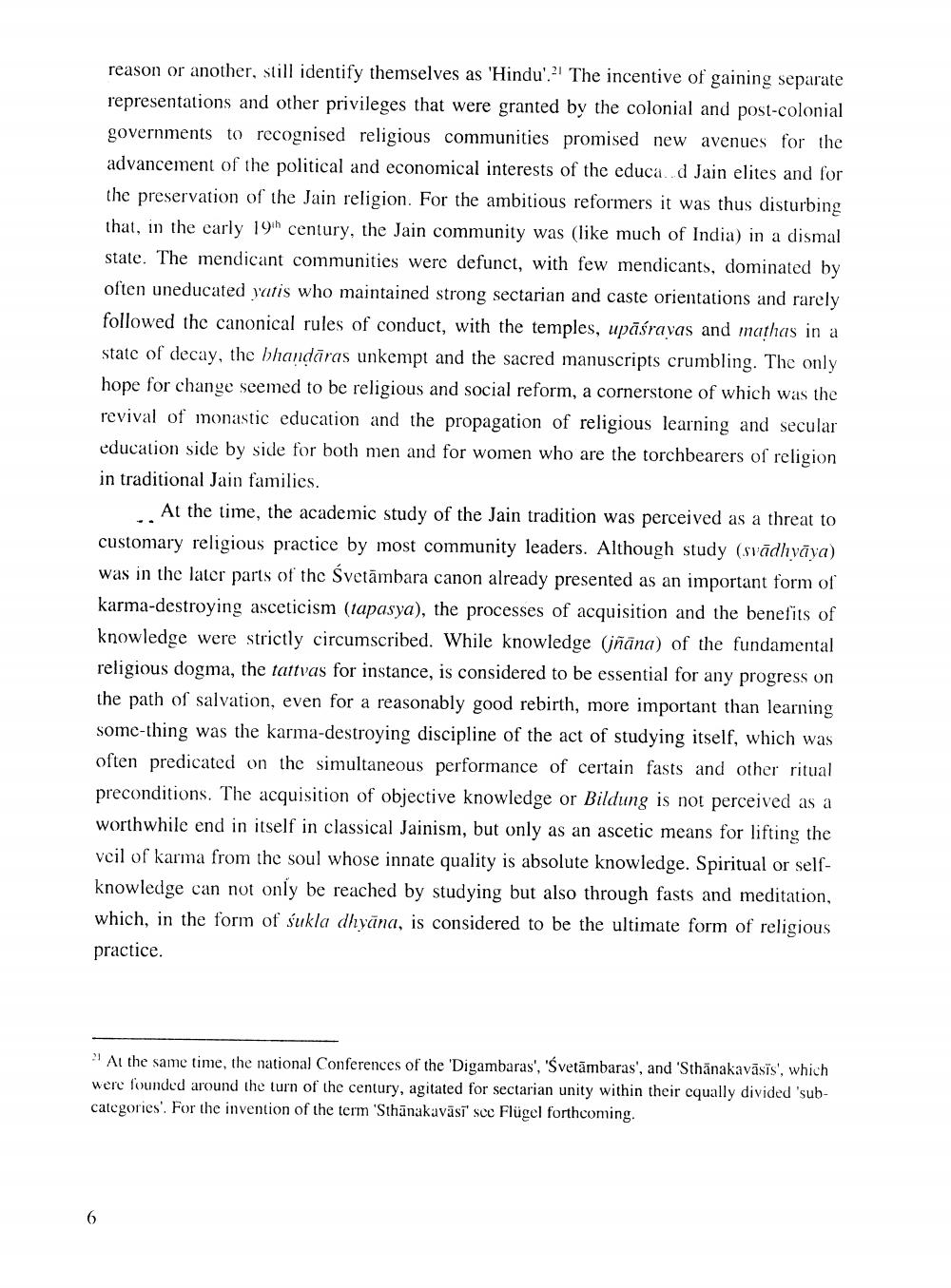________________
reason or another, still identify themselves as 'Hindu'. The incentive of gaining separate representations and other privileges that were granted by the colonial and post-colonial governments to recognised religious communities promised new avenues for the advancement of the political and economical interests of the educad Jain elites and for the preservation of the Jain religion. For the ambitious reformers it was thus disturbing that, in the early 19th century, the Jain community was (like much of India) in a dismal state. The mendicant communities were defunct, with few mendicants, dominated by often uneducated yatis who maintained strong sectarian and caste orientations and rarely followed the canonical rules of conduct, with the temples, upāśravas and mathas in a state of decay, the bhandāras unkempt and the sacred manuscripts crumbling. The only hope for change seemed to be religious and social reform, a cornerstone of which was the revival of monastic education and the propagation of religious learning and secular education side by side for both men and for women who are the torchbearers of religion in traditional Jain families.
At the time, the academic study of the Jain tradition was perceived as a threat to customary religious practice by most community leaders. Although study (svādlıvaya) was in the later parts of the Svetāmbara canon already presented as an important form of karma-destroying asceticism (tapasya), the processes of acquisition and the benefits of knowledge were strictly circumscribed. While knowledge (jñāna) of the fundamental religious dogma, the tattvas for instance, is considered to be essential for any progress on the path of salvation, even for a reasonably good rebirth, more important than learning some thing was the karma-destroying discipline of the act of studying itself, which was often predicated on the simultaneous performance of certain fasts and other ritual preconditions. The acquisition of objective knowledge or Bildung is not perceived as a worthwhile end in itself in classical Jainism, but only as an ascetic means for lifting the veil of karma from the soul whose innate quality is absolute knowledge. Spiritual or selfknowledge can not only be reached by studying but also through fasts and meditation, which, in the form of sukla dhyāna, is considered to be the ultimate form of religious practice.
At the same time, the national Conferences of the 'Digambaras', 'Svetāmbaras', and 'Sthānakavāsīs', which were founded around the turn of the century, agitated for sectarian unity within their equally divided 'subcategories'. For the invention of the term 'Sthanakavāsi' scc Flügel forthcoming.




